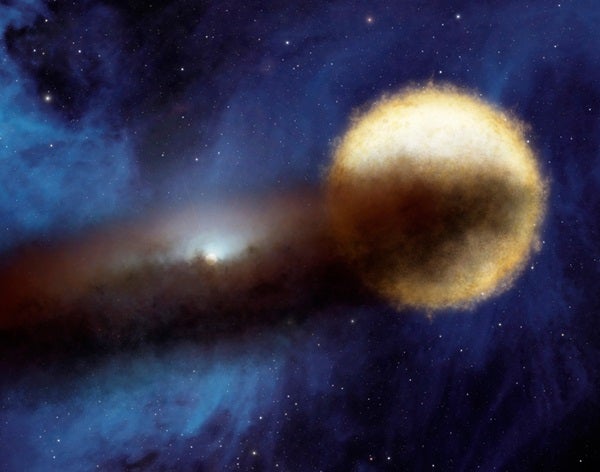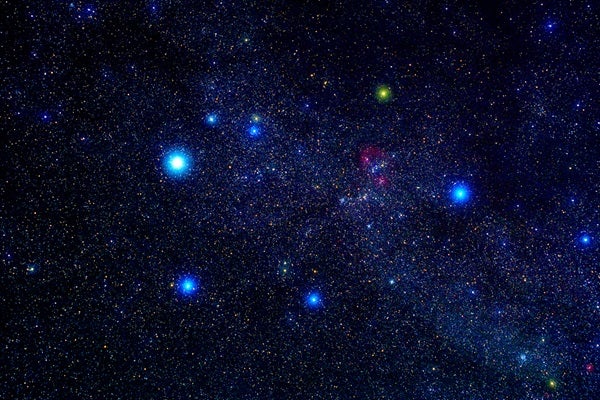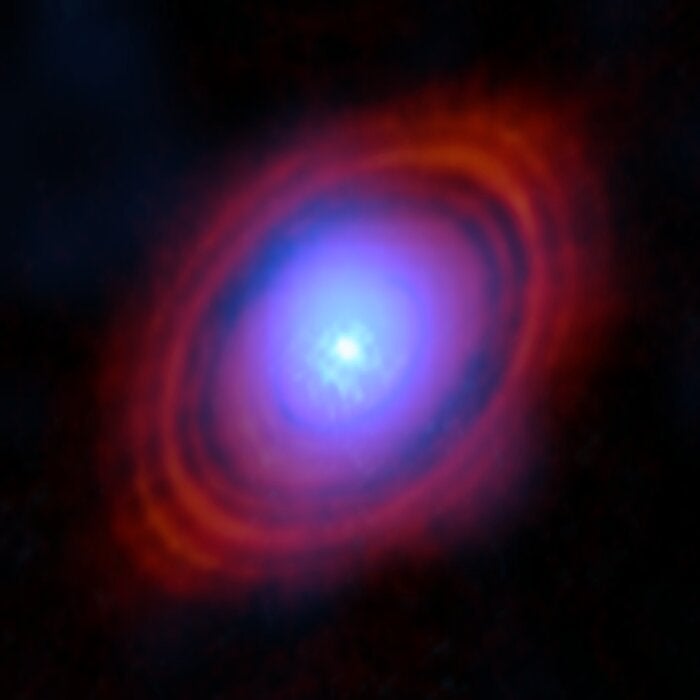Variable stars are a lot like macaroni salad. They’re commonplace, and yet most observers barely notice them.
Red supergiants such as Betelgeuse irregularly change brightness by unpredictably growing larger and smaller like balloons. But other variables wax and wane with perfect Teutonic precision. These are the “eclipsing variables” — double stars whose orbit lies edgewise to our line of sight so that one star appears to partially or totally obscure the other at exact intervals.
Some of these are famous indeed, such as Algol (Beta [β] Persei), whose name (“the ghoul”) shows that the ancients were very aware of its eerie changes. Here, the main star’s light gets chopped in half every 2 days, 20 hours, and 49 minutes. Other variables lose and regain their light in periods of weeks or months. But it’s extremely rare to have a brightness cycle as long as the one displayed by the star Epsilon in the constellation Auriga the Charioteer.

Bringing the universe to your door. We’re excited to announce Astronomy magazine’s new Space and Beyond subscription box – a quarterly adventure, curated with an astronomy-themed collection in every box. Learn More >>.
Epsilon (ε) Aurigae (or-EYE-gee) goes into eclipse every 27 years. These events are precious. I remember watching Epsilon’s fade-out in 1983 and wondering how the world would look the next time around. Tracking this particular star is stone simple: Epsilon is the nearest medium-bright star to the famous Capella (Alpha [α] Aurigae), winter’s second-brightest luminary. Epsilon is part of a conspicuous triangle called “The Kids,” just below Capella, and is normally the brightest of the three. When in eclipse, it’s fainter than the others. Easy.
The eclipse lasts two years but has puzzled astronomers for centuries. The way its light dims for half a year and then stays flat for a full year before slowly returning, plus irregularities during the eclipse, suggests the object blocking Epsilon is not a star at all. The lengthy eclipse duration seems to rule out any solid body because no orbiting sphere is that big. Or is it? If it is a star, then it is far and away the largest in the universe. Theories trying to explain the nature of the mysterious unseen object blocking Epsilon had, until 2009, met with one problem or another.
Spectroscopy reveals that Epsilon itself is a gargantuan sun, a type F supergiant. It must have at least 20 times the weight, 200 to 300 times the diameter, and 60,000 times the brilliance of our Sun. If not for its daunting distance of 3,000 light-years, it would dominate our sky. If it were as close as its constellation-mate Capella, it would cast shadows at a supernova-like magnitude –6 and be visible during the day.
So, again, what bizarre entity blocks out half of Epsilon’s light every 27 years for two years?
The most recent eclipse started in 2009 and continued until August 2011. Researchers in many countries took this opportunity to study the strange system, and a major breakthrough occurred using the orbiting infrared Spitzer Space Telescope. Its sensors were designed to detect objects fainter than naked-eye stars and are too sensitive to be aimed directly at Epsilon. Thus, astronomers tried a novel trick. They pointed just a corner of the orbiting scope’s arrays at the bright star and took an exposure of just 1/100 second — the fastest “shutter speed” available. Bingo. They got the clearest-ever view of Epsilon Aurigae.
Sure enough, Epsilon is not eclipsed by a star at all. Rather, the enormous object periodically blocking its light is a dense pancake of countless solid particles we view nearly edgewise. It probably surrounds its own giant star, one so newly born that it is still embedded in thick embryonic birthing material.
In the past, one problem with this model had been the lack of any gas. New stars don’t just emerge from dust, but instead from copious hydrogen clouds. If such gas periodically passed in front of Epsilon, it would have an obvious effect on Epsilon’s light spectrum, yet this is never seen. Instead, Epsilon’s companion must lie hidden within an impenetrable dusty hamburger made of solids alone. The new Spitzer data did more than confirm this hypothesis; it added a surprise. It showed that the enormous dirty disk is gravel rather than dust.
The Spitzer team also determined the true size of the floating gravel patch: It’s about four times the Sun-Earth distance across, or some 430 times the diameter of our Sun. Steve Howell, one of the team’s astronomers at the National Optical Astronomy Observatory, ecstatically summed up the solution to the longheld mystery: “Everything fell into place. … All the features of this system are interlinked, so if you tinker with one, you have to change another. It’s been hard to get everything to fall together perfectly until now.”
No one, not even a paving contractor, would have guessed that the culprit dimming the light of this colossal star is the largest patch of gravel in the known universe.










